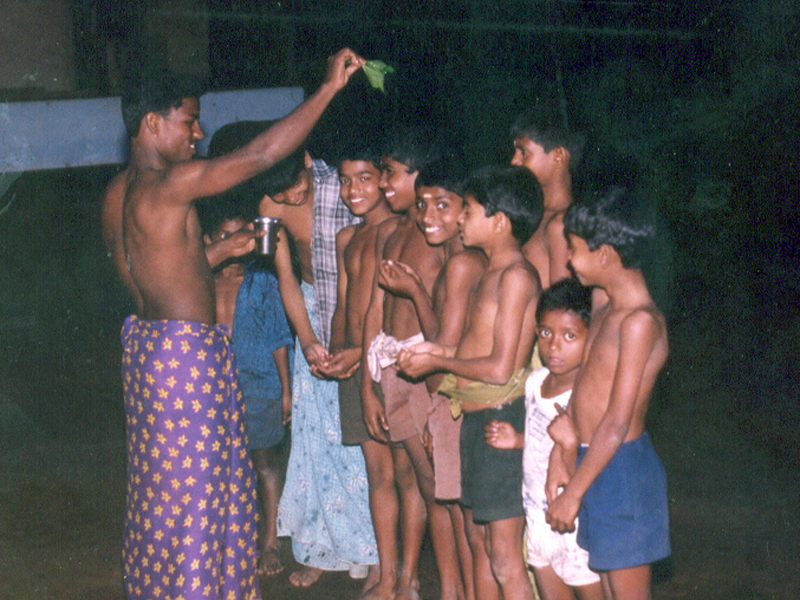Kurichiya – an ethnic minor community of Kerala is well known for their honesty, bravery, health, happiness, and sustainable life styles. A famous saying among them is that “Vakinu Sathyam Ooninu Krithyam” which means, be honest to the promise given and be punctual to food. They produce diverse foods together by taking advantage of the seasons and land and water terrains, and eat together diverse diets in prescribed timings. People who slip the set timings have to lose their food!

Being a landholding tribal community with a nature caring tradition, they conserve diverse plant and animal genetic resources in food production bot on-farm and off-farm. Both men and women hold enormous knowledge and experiences to manage the food production system in a sustainable and healthy way. The Kurichiya community enjoys high longevity and prosperity compared to other ethnic communities and even to certain extent the mainstream communities without practically no dependance on modern system of medicine and health practices.
The choice of food and the way of production and consumption of such foods make Kurichiya different from other communities. As a tradition they avoid buying food except salt and sugar from market or eating from outside home, and eating together and on correct time. The food plate of average Kurichiya family consist mostly brown rice, or ragi (in the past) as the main staple along with a plenty of leafy greens, vegetables and tubers, and occasionally game meat and fish (Aiyapan and Mahadevan 2003).


MSSBG has documented this diversity at different intervals -between 1997-2000 (Vedavally & Anil ); 2005-2010 (Ratheesh Narayan & Anil); and 2016-2020 (Suma Vishnudas ) and found that there is a sharp decline in production and consumption of diverse foods. The Garden has now engaged in reviving the traditional food basket of this community by organizing conservation, seed production and distribution of the “lost crop varieties and species”.
Agricultural Heritage of Kurichiya Community:
Kurichiya follows a shifting cultivation and cereals like Maize, Thina and Ragi was common in their food basket. A unique maize variety ‘Manicholam’ is still one among the most preferred cereal in this community. Rice is an integral part of the life and culture of the Kurichiyas. They conserve and cultivate a number of traditional rice varieties, most of them are native to Wayanad. Few rice varieties such as Veliyan, Chennellu, Thondi and Gandhakasala are commonly cultivated at Wayanad by the farmers now.
Dietary habit of Kurichiya community
The food basket of Kurichiya is rich with varieties of plants and animals. Years back they used to cultivate minor millets such as Muthari, Ragi and Thina very commonly. Special upland rice called “Karuthan” was also cultivated during that time. They had a huge stock of milching animals and with this they could meet the need of curd, butter and ghee. Hunting was also prevalent once, as there was no restriction to access to the forest. Wild pig was the best and delicious meat of Kurichiya community. This meat was indispensable for any kind of community feast.


Taboos followed by Kurichiya community in collection and consumption of dietary items
Kurichiya never prefer to eat “Bull” (beef) meat as it is an integral part of their agricultural operations. Therefore, they offer utmost admiration to buffalos, at the end of a season. While closing all the agricultural operations particularly, rice field activities, they rub ghee on the forehead of bulls and buffaloes and medicine to cure their wounds occurred owing to continuous ploughing and they pour water on them. Kurichiya avoided crow, vulture meat in their diet as they are scavenger birds.

Source of water during hunting
During hunting they make use of Bamboo, Maruthuvellam and Athivellam to satisfy the thirst. Similarly, a wild climber Panivalli (Derris scandens) was also used for the same purpose. Palm toddy is still one of the beverages they consume and their community is skilled in palm toddy tapping methods. They use a set of roots as catalysts for the fermentation of toddy which includes roots of Areca nut (Areca catechu), Nenthravalli (Bridelia scandens), and bark of Konnamaram (Cassia fistula) and the root of Manipullu (Pennisetum hohenackeri Hochst).
Vipin Das, T Raveendran
